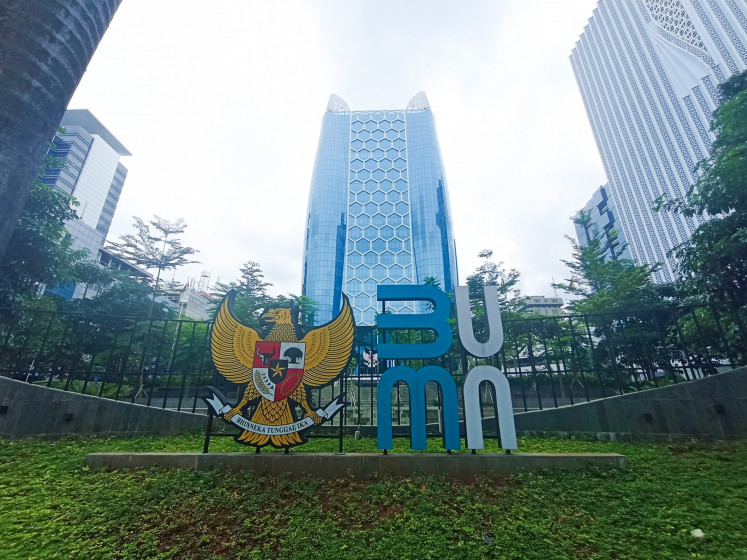Broken component, pilot error led to AirAsia crash: KNKT
A combination of chronic problems with a faulty rudder system and the way that the pilot and co-pilot responded were the main factors in the AirAsia flight QZ8501 crash that killed all 162 people on board last December, the National Transportation Safety Committee (KNKT) announced on Tuesday as a result of its investigation into the incident
Change text size
Gift Premium Articles
to Anyone

A
combination of chronic problems with a faulty rudder system and the way that the pilot and co-pilot responded were the main factors in the AirAsia flight QZ8501 crash that killed all 162 people on board last December, the National Transportation Safety Committee (KNKT) announced on Tuesday as a result of its investigation into the incident.
The committee revealed that an analysis of the plane's data recorder showed that the rudder control system had sent repeated warnings to the cockpit during the Dec. 28 flight between Surabaya, East Java, and Singapore.
Aircraft maintenance records for the Airbus A320 showed that problems with the rudder system
had been reported 23 times that year, with an increased frequency in the three months before the accident. Investigators said the problem was caused by a cracked soldering joint on an electronic circuit board.
'It was likely caused by the fact that the electronic circuit board is located at the tail section in a non air-conditioned room, which means it is exposed to extreme environments. When the aircraft was parked, the temperature was very high and dropped very low during flights, up to -50 degrees Celsius. This extreme situation might have caused the cracking,' KNKT investigator Nurcahyo Utomo said at a press conference announcing the results.
While the pilot and the co-pilot handled the first three warnings well, the investigators suspected that one of the pilots decided to pull down the circuit break, which in turn reset the Flight Augmentation Computer (FAC) or the control system of the aircraft, after the fourth warning.
The reset disengaged the plane's autopilot, auto-thrust and fly-by-wire flight control system and as a result several flight safeguards were compromised.
The subsequent actions of the pilot and co-pilot caused the aircraft to enter an unstable condition. Nurcahyo said the plane's voice recorder indicated possible confusion between the pilot and co-pilot. He said that at one point the pilot said 'pull down', but at that moment the plane was ascending.
After the plane climbed to 11,582 meters, it entered a prolonged stall from which the flight crew were unable to recover and the aircraft plowed into the Java Sea.
'It seems that there was a miscommunication between the pilot and co-pilot after the fourth fault,' Nurcahyo said.
The A320-200 Airbus, which has a 280-passenger capacity, was produced in 2005 and it flew for the first time in September 2008. Its last scheduled maintenance before the crash was conducted on Nov. 16, 2014.
Transportation Ministry air transportation director Muhammad Alwi said on Tuesday that people should not be concerned about a similar incident caused by an electrical system fault occurring again, as such malfunctions were actually common.
'Repeated trouble in maintenance is a normal thing,' he said.
'If the trouble is fixed in accordance with the manual maintenance procedures, then it's alright,' he said.
Commenting on the KNKT's findings, AirAsia chief executive Tony Fernandes said that 'There is much to be learned here from AirAsia, the manufacturer and the aviation industry.'
'We will not leave any stone unturned to make sure the industry learns from this tragic incident,' Fernandes tweeted.
_________________________________
Crash chronology
> 05:35 a.m.: Departure from Surabaya to Singapore
> 06:01 a.m.: First warning about the failure of Rudder Travel Limiter (RTL) system at 20,000 feet
> 06:09 a.m.: Second warning
> 06:13 a.m.: Third warning
> 06:15 a.m.: Fourth warning, autopilot and auto-thrust disengaged. Nine seconds after that, no input on manual controls, causing the plane to roll 54 degrees to the side.
> 06:20 a.m.: Last recording on the blackbox









